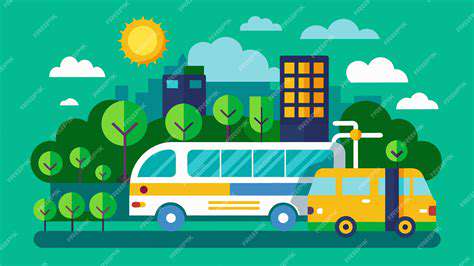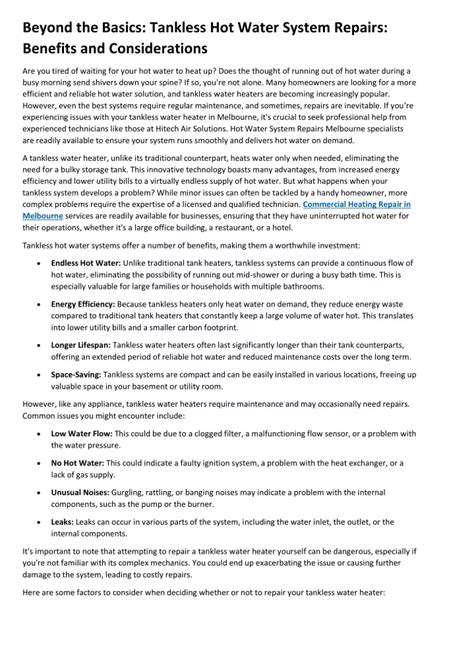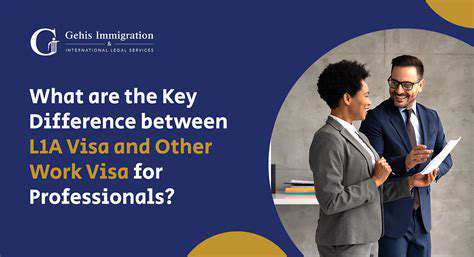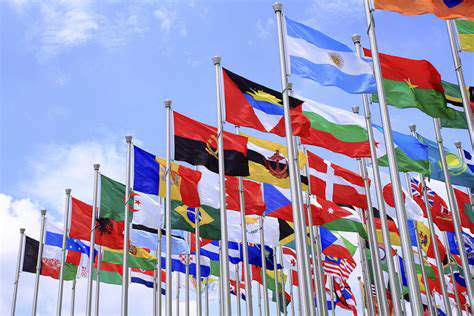Travel Safety Tips for Using Public Transport
Prioritizing Security in Public Spaces
Traveling in public spaces, whether it's a bustling airport, a crowded train station, or a vibrant city street, presents unique security challenges. Proactive measures are crucial to mitigating risks and ensuring a safe and enjoyable experience. This involves more than just being aware of your surroundings; it's about taking conscious steps to protect your belongings and personal safety. From strategically placing your bag to being mindful of your surroundings, every action plays a role in maintaining your security. Understanding the potential dangers and implementing simple precautions can make a significant difference in your travel experience.
One key aspect of prioritizing security is awareness. Continuously scanning your surroundings, paying attention to potential threats, and maintaining situational awareness are vital. This involves being aware of unusual activity around you, observing the behavior of others, and not drawing unnecessary attention to yourself. Recognizing potential risks and understanding how to respond to them is a proactive approach to staying safe in public spaces, allowing you to react effectively should a threat arise.
Securing Your Belongings: Practical Strategies
Protecting your valuables is paramount when traveling in public spaces. Employing practical strategies to secure your belongings can significantly reduce the risk of theft or loss. This involves more than just keeping your valuables close; it's about employing techniques that deter potential thieves and protect your possessions. Strategically placing your bag, using secure pockets, and keeping your personal items within reach are all crucial steps. The goal is to make yourself a less appealing target for those looking to take advantage of vulnerable situations.
Using anti-theft bags or backpacks with secure closures is a smart choice. Similarly, keeping your valuables out of sight whenever possible is a good practice. Consider utilizing money belts or hidden pockets to protect cash and important documents. These measures, combined with vigilance and awareness, create a layered defense against theft. Remember, a proactive approach to securing your belongings significantly reduces the likelihood of experiencing theft or loss while traveling in public spaces.
Furthermore, avoid displaying expensive items that may attract unwanted attention. Be aware of your surroundings and avoid placing yourself in situations where you might be distracted or vulnerable. Knowing where you are, who is around you, and what the potential risks are part of a proactive and effective security plan. This comprehensive approach to securing your belongings significantly enhances your safety and allows you to fully enjoy your travels.
Utilizing Public Transport Resources for Added Security

Understanding the Benefits of Public Transport
Public transport systems are vital for urban mobility, offering a sustainable and often more affordable alternative to private vehicles. By reducing reliance on individual cars, public transport significantly decreases traffic congestion and associated pollution. This, in turn, improves air quality and public health, creating a more livable environment for everyone. Furthermore, efficient public transport networks can facilitate economic growth by connecting communities and enabling easier access to jobs and services.
Public transport systems also play a crucial role in reducing carbon emissions, contributing to a more environmentally conscious society. This is a significant step in mitigating climate change and promoting sustainable development. The accessibility and affordability of public transport make it a critical component of inclusive urban planning, ensuring that all members of the community can access opportunities and necessities.
Efficient Planning and Infrastructure
Effective public transport relies heavily on well-planned and maintained infrastructure. This includes strategically located stations, clear and comprehensive route maps, and reliable scheduling. A well-maintained system guarantees a smooth and predictable journey for commuters, enhancing overall satisfaction and encouraging usage. Regular maintenance and upgrades are essential to ensure safety and reliability, which are paramount in building public trust.
Investing in modern technology, such as real-time tracking systems and user-friendly mobile applications, can significantly improve the passenger experience. These technologies enable commuters to plan their journeys efficiently and accurately, reducing travel time and frustration.
Accessibility and Inclusivity
Public transport systems should be designed with inclusivity in mind, catering to the needs of all users, including people with disabilities, seniors, and families. This means providing accessible facilities, such as ramps, elevators, and designated seating areas, to ensure everyone can utilize the system without barriers. Clear communication and signage in multiple languages further enhances accessibility, ensuring that everyone feels welcome and included.
Promoting Sustainable Practices
Sustainable practices are essential in the public transport sector, from using eco-friendly fuels to implementing energy-efficient vehicles. The reduction of carbon emissions is crucial for the long-term health of the planet and future generations. This includes promoting the use of electric buses, trams, and trains to minimize environmental impact.
Encouraging cycling and walking as complementary modes of transport can further reduce reliance on private vehicles and improve overall sustainability. Supporting and promoting these practices is critical to a holistic approach to urban mobility.
Economic Benefits of Public Transport
Public transport systems generate substantial economic benefits for cities and communities. By reducing traffic congestion, they save commuters significant amounts of time and money. This time savings can be translated into increased productivity in the workplace. Public transport also contributes to the reduction of traffic-related accidents, leading to significant cost savings for society as a whole.
Furthermore, the development of public transport infrastructure can revitalize neglected areas, creating jobs and boosting local economies. The creation of new employment opportunities through the construction, maintenance, and operation of public transport systems has a direct economic impact on the region.
Encouraging Public Participation and Engagement
Engaging the public in the planning and development of public transport systems is crucial for success. Collecting feedback, conducting surveys, and organizing public forums can help ensure that the system meets the needs and preferences of the community. This community involvement fosters ownership and encourages greater usage of the system. Promoting awareness about the benefits of public transport and highlighting its importance in everyday life is key to successful implementation and long-term sustainability.
Regular communication with users through various channels, such as social media, newsletters, and community meetings, helps keep the public informed about changes, improvements, and new initiatives. Transparent communication builds trust and ensures that the public feels valued as stakeholders in the system.
Reporting Suspicious Activities: Your Role in Safety
Understanding Suspicious Activities
Recognizing suspicious activity is crucial for your safety while traveling. This involves paying attention to your surroundings and identifying behaviors that seem out of place or potentially dangerous. For example, a person lurking near ATMs or suspiciously watching you from a distance could be a red flag. It's important to remember that what one person considers suspicious, another might not. Develop a sense of what's typical for the area and trust your instincts. Don't hesitate to report anything that makes you feel uneasy or unsafe.
Observing patterns and trends in the local environment can help you quickly identify any unusual occurrences. Paying attention to the language used by locals, the behavior of shopkeepers, and the overall atmosphere can provide valuable insights into potential risks.
Reporting Mechanisms and Procedures
Knowing how to report suspicious activities is just as vital as recognizing them. Many countries and cities have dedicated reporting channels, such as local police departments or tourist information centers. Familiarize yourself with the procedures for reporting suspicious incidents in the countries you plan to visit. Having this information readily available will empower you to take action if necessary. Don't be afraid to utilize these resources; your safety is paramount.
Some locations may have specific reporting apps or online platforms. Research these options in advance to ensure you have the most effective tools for reporting concerns.
Protecting Your Belongings
Taking precautions to protect your belongings is a fundamental aspect of travel safety. Always be mindful of your surroundings and keep your valuables close to you. Avoid displaying expensive items, and consider using anti-theft bags or backpacks. Ensure your luggage is securely fastened and stored in designated areas. The more vigilant you are, the less likely you are to become a target for theft.
Staying Aware of Your Surroundings
Constant awareness of your surroundings is a critical component of travel safety. Paying attention to people and activities around you, including unusual behavior, large gatherings, or suspicious vehicles, is key to proactively identifying potential threats. This proactive approach allows you to identify and avoid situations that may compromise your security. Staying aware also involves being observant of local customs and traditions to avoid unintentional offenses or misunderstandings.
Communicating with Others
Communicating with others, especially fellow travelers or local contacts, can significantly enhance your safety. Sharing your itinerary with trusted individuals, notifying them of any changes, and informing them of your location can provide a safety net. In case of an emergency, knowing who to contact will ease the process of seeking assistance. This collaborative approach can foster a supportive and secure travel experience.
Utilizing Technology for Safety
Modern technology offers valuable tools for enhancing personal safety during travel. Downloading safety apps or using GPS tracking devices can provide peace of mind and a means of contacting emergency services in case of an incident. Utilizing these tools strategically allows you to feel more secure and be prepared for unexpected situations. Remember to familiarize yourself with the functionality of these tools before your trip.
Seeking Assistance from Local Authorities
When encountering situations that require immediate assistance, don't hesitate to approach local authorities for help. Whether it's a lost item, a medical emergency, or a security concern, local authorities are a valuable resource. Knowing their contact information and procedures ahead of time will enable you to seek assistance efficiently and effectively, ensuring your safety and well-being during your travels. Always remember that seeking help is a sign of strength, not weakness.
![Planning a Family Camping Trip [Beginner's Guide]](/static/images/27/2025-04/MakingtheMostofYourCampingExperience.jpg)










